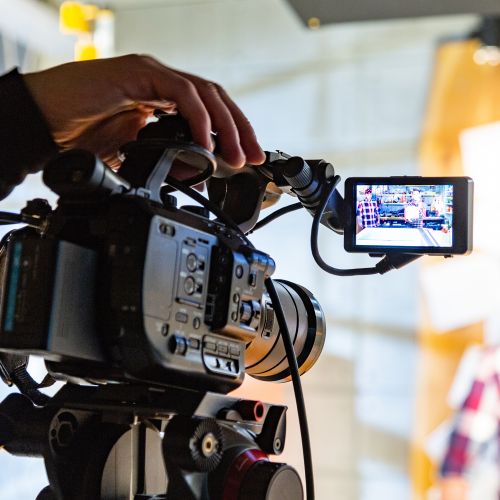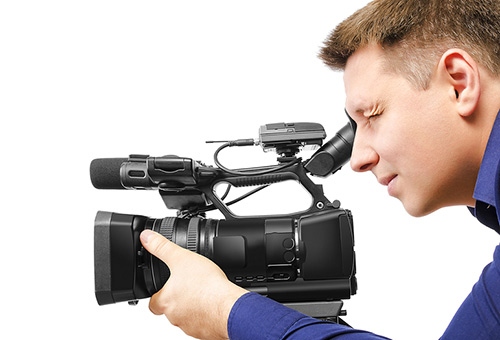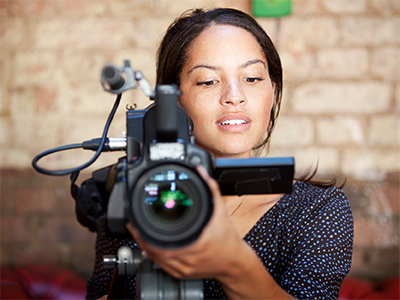Comprehending the Importance of Videography in Legal Process
The integration of videography into lawful process has actually emerged as a significant aspect in the presentation and analysis of evidence. By recording visual components such as body language and facial expressions, videography improves the narrative surrounding witness testimonies and can exceptionally influence court assumptions.
Role of Videography in Proof
Videography plays a progressively essential role in legal procedures, working as an effective medium for offering evidence. The integration of video recordings into the lawful structure enables a much more vibrant representation of truths, making it possible for jurors and courts to imagine events as they took place. This aesthetic documentation can encompass an array of products, including monitoring video, tape-recorded witness testimonies, and expert presentations, every one of which can dramatically enhance the evidentiary landscape.
Among the key advantages of videography is its capability to record nuances that might be lost in composed accounts. Faces, body movement, and situational context can offer vital understandings, assisting to share emotions and objectives that message alone can not. Additionally, making use of video clip evidence fosters a more appealing courtroom experience, possibly assisting jurors in recognizing complicated situations.
As technology developments, the high quality and accessibility of videographic evidence have actually enhanced, making it an integral component of contemporary lawful methods. Courts progressively acknowledge the worth of video as a dependable resource of details, motivating lawyers to adjust their techniques for proof presentation. Ultimately, videography serves not just to illustrate realities yet also to enhance the general integrity of the judicial procedure.

Enhancing Reliability and Clearness
A considerable benefit of integrating videography in lawful proceedings is its capability to enhance both credibility and quality of evidence offered in court. Videographic evidence can capture nuances that created documents may ignore, such as tone, body movement, and context. This graph permits courts and juries to much better comprehend the conditions bordering the situation, thus promoting an extra accurate understanding of the occasions in question.

Additionally, the clearness afforded by videography reduces the likelihood of misconception that can occur from textual summaries. This accuracy is specifically essential in complicated cases, where information can be quickly misinterpreted. Eventually, by providing evidence in a visually available layout, videography not only enhances the stability of the judicial process but also sustains informed decision-making by those entailed in legal proceedings.
Effect On Court Understanding
The addition of videographic proof considerably affects jury understanding, commonly causing more engaged and notified deliberations. Jurors are typically extra responsive to aesthetic information, which can enhance their understanding of complicated cases. Videography offers facts in a fashion that is both available and compelling, allowing jurors to get in touch with the evidence on a much more personal level.
Furthermore, the capability to witness occasions as they happened can evoke psychological reactions that written records or spoken testimonies might fall short to generate. This emotional interaction can lead jurors to develop stronger viewpoints pertaining to the trustworthiness of witnesses and the overall narrative of the case. The aesthetic representation of proof additionally assists in clearing up ambiguities, making it much easier for jurors to comprehend the context and importance of the information provided.
In addition, videography can offer as a powerful tool for storytelling, making it possible for attorneys to construct a persuasive narrative that resonates with the court. When jurors can picture scenarios and witness essential moments, their capability to calculated thoughtfully and get to a knowledgeable judgment is considerably boosted, eventually influencing the outcome of lawful procedures.
Best Practices for Legal Videography
Applying finest methods in lawful videography is vital for guaranteeing that visual proof is both reliable and efficient in the court room. Initially, pick qualified specialists who specialize in lawful videography to guarantee the technical top quality of the recordings. This consists of using high-resolution electronic cameras and professional sound tools to capture clear visuals and audio.
2nd, keep correct paperwork throughout the recording process. This includes producing a thorough log that consists of timestamps, descriptions of the content, and the identities of all individuals present. Such paperwork can boost the authenticity this website of the video clip.

Furthermore, think about the usage of proper editing and enhancing strategies. While it is important to preserve the original content, minor modifications for quality-- such as boosting audio degrees-- can improve the total presentation without modifying the material.
Future Trends in Legal Videography
As legal videography remains to develop, emerging modern technologies and approaches are forming the future landscape of visual proof in the courtroom (Legal Videography). One significant fad is the combination of high-definition and 4K video high quality, enhancing the quality and information of taped statements and evidence. This better resolution help jurors in comprehensively assessing the integrity of witnesses and the nuances of the offered products
Additionally, using fabricated knowledge (AI) in video evaluation is obtaining traction. AI tools can aid in determining essential moments in video footage, generating transcripts, and even evaluating non-verbal communication, which provides deeper understandings into witness trustworthiness. Moreover, online fact (VR) and enhanced reality (AR) are positioned to change exactly how evidence exists, enabling jurors to submerse themselves in criminal activity scenes or circumstances, thereby fostering a more profound understanding of the context.
Conclusion
In summary, videography functions as have a peek at these guys an indispensable device in legal process, boosting the discussion of evidence and enhancing the overall understanding of cases. my latest blog post By capturing non-verbal signs and strengthening the reputation of witness accounts, videography substantially influences jury understanding and decision-making procedures - Legal Videography. Sticking to best techniques guarantees the efficiency of legal videography, while arising trends promise to more increase its duty in the judicial system, eventually cultivating a more educated and involved lawful environment
Videography plays an increasingly critical duty in legal proceedings, serving as a powerful medium for providing evidence.A significant advantage of incorporating videography in lawful process is its capability to enhance both reliability and clearness of proof presented in court. Eventually, by presenting evidence in an aesthetically available format, videography not only enhances the stability of the judicial procedure yet likewise supports informed decision-making by those entailed in lawful proceedings.
In summary, videography serves as an indispensable tool in legal process, enhancing the discussion of proof and enhancing the general understanding of situations. Legal Videography. Adhering to ideal techniques guarantees the effectiveness of lawful videography, while emerging patterns promise to more augment its function in the judicial system, inevitably fostering an extra informed and involved legal setting